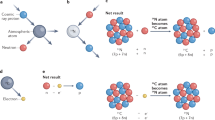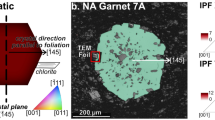Abstract
IT is usually from the investigations of mineralogy that an estimation of the grade of metamorphism is made, since the appearance of some minerals and disappearance of others—or the change of composition in a solid solution series—is often symptomatic of the intensity of metamorphism. “For example, biotite is a common mineral of metamorphic rocks; however, it does not occur in very low grade rocks, its composition then being represented by mixtures of muscovite and chlorite. Minerals of the epidote group are characteristic of low grade rocks. At higher grades of metamorphism these minerals are largely converted to anorthite which enters into plagioclase. In lowest grade rocks the plagioclase is nearly pure albite and it increases in calcium content as the grade of metamorphism increases”1.
This is a preview of subscription content, access via your institution
Access options
Subscribe to this journal
Receive 51 print issues and online access
$199.00 per year
only $3.90 per issue
Buy this article
- Purchase on Springer Link
- Instant access to full article PDF
Prices may be subject to local taxes which are calculated during checkout
Similar content being viewed by others
References
Berry, L. G., and Mason, B., Mineralogy (W. H, Freeman and Co., 1959).
Evans, R. D., The Atomic Nucleus (McGraw-Hill, 1955).
Grodstein, G. W., NBS Circular 583 (1957).
Author information
Authors and Affiliations
Rights and permissions
About this article
Cite this article
MURTY, R. Metamorphism and Mineral Identification by Gamma Ray Methods. Nature 205, 60–61 (1965). https://doi.org/10.1038/205060b0
Published:
Issue Date:
DOI: https://doi.org/10.1038/205060b0
Comments
By submitting a comment you agree to abide by our Terms and Community Guidelines. If you find something abusive or that does not comply with our terms or guidelines please flag it as inappropriate.



